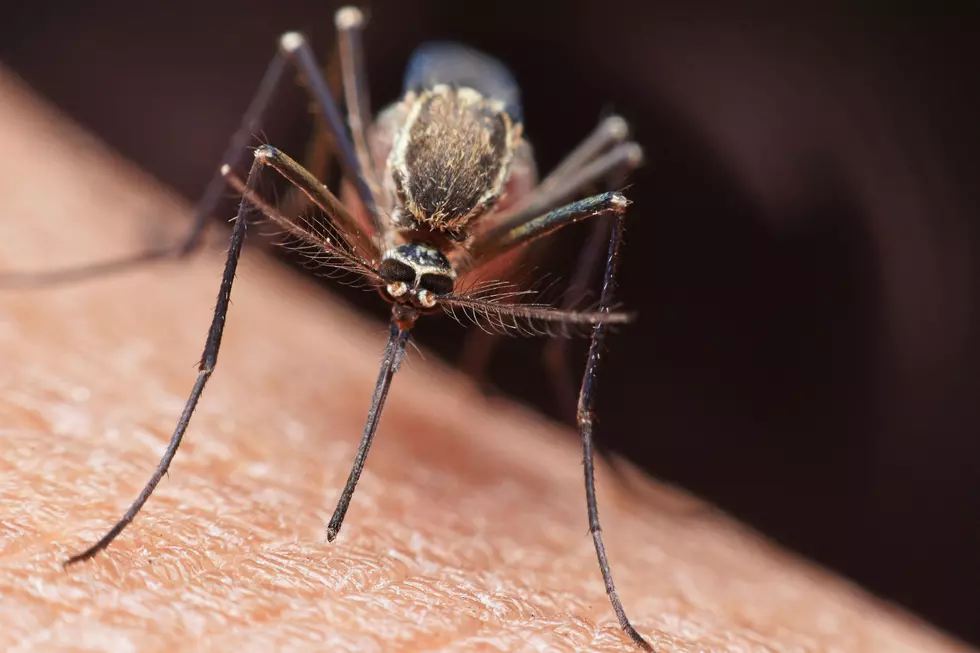
The Wyoming Department of Health Doesn’t Want to Bug You, But…
"It's summertime summertime sum sum summertime ..."
But with apologies to the Jamies' 1958 hit song: Bugs.
The Wyoming Department of Health says people can avoid potentially serious insect-spread diseases now that warmer weather has arrived and people want to get out and have some fun or work in the great outdoors.
Avoiding ticks and mosquitos is Job One, Department of Health epidemiologist Courtney Tillman says.
“Wyoming’s reported case numbers from the diseases these insects can cause are typically low, but we consistently see activity each year," Tillman says. "And, unfortunately, the results can sometimes be severe."
For example, mosquitos spread West Nile virus when they feed on infected birds and then bite people, animals or other birds.
Most people infected with the virus don’t have symptoms.
But for those who do get sick, symptoms include fever, headache, body aches, skin rash and swollen lymph nodes. A very small number of individuals develop West Nile neuroinvasive disease with symptoms such as severe headache, fever, neck stiffness, stupor, disorientation, coma, tremors, convulsions and paralysis.
The Department of Health offers the five D's of West Nile virus prevention:
- 1) DAWN and
- 2) DUSK – Mosquitos prefer to feed at dawn or dusk, so avoid spending time outside during these times.
- DRESS – Wear shoes, socks, long pants and a long-sleeved shirt outdoors. Clothing should be light-colored and made of tightly woven materials.
- DRAIN – Mosquitos breed in shallow, stagnant water. Reduce the amount of standing water by draining and/or removing.
- 5) DEET – Use an insect repellent containing DEET (N, N-diethyl-m-toluamide). Be sure to read and follow label instructions. Picaridin (KBR 3023) or oil of lemon eucalyptus can also be effective.
“These recommendations are familiar but remain important to help prevent mosquito bites,” Tillman said.
Then there are ticks.
Infected ticks in Wyoming can sometimes spread tularemia, Rocky Mountain spotted fever and Colorado tick fever.
Tularemia symptoms include fever, swollen and painful lymph glands, inflamed eyes, sore throat, mouth sores, skin ulcers and diarrhea. If the bacteria are inhaled, symptoms can include sudden onset of fever, chills, headache, muscle aches, joint pain, dry cough and progressive weakness and pneumonia.
Rocky Mountain Spotted Fever's initial symptoms may include fever, nausea, vomiting, muscle pain, lack of appetite and severe headache. Later signs and symptoms may include rash, abdominal pain, joint pain and diarrhea.
Colorado tick fever usually causes fever, headache, muscle and joint pain, and, occasionally, a rash.
People can be exposed to ticks when walking through, playing or sitting in brushy and grassy areas, or handling certain animals.
Just like the five D's for mosquitos, the Department of Health offers these suggestions to avoid tick-related diseases:
- Apply insect repellents registered with the Environmental Protection Agency, such as those containing 20 percent or more DEET and/or picaradin.
- Treat outdoor clothing and gear with products containing 0.5 percent permethrin.
- Avoid brushy areas with high grass.
- When hiking, walk in the center of trails.
- Upon return from potentially tick-infested areas, shower and search yourself and children for ticks and remove if found.
- Tumble dry clothing on high heat for 10 minutes after being in tick areas to kill ticks on dry clothing. If clothes require washing, use hot water.
- Check pets for ticks; use tick control products recommended by veterinarians.
- Carefully handle live or dead potentially infected animals such as rabbits and rodents.
- Always follow product instructions when using permethrin and insect repellents.
The Department of Health's tularemia, Rocky Mountain Spotted Fever and Colorado tick fever web pages each include a “tick bite assessment” tool, which demonstrates the proper way to remove an attached tick and describes when to seek healthcare after a tick bite, Tillman says.
If there's any good news in this, the probability of Lyme disease, a big problem in some places, in Wyoming is near zero, she says
"The ticks that spread Lyme disease are not known to live in Wyoming, Tillman says.
Visit the Wyoming Department of Health's website for more information about mosquito-related and tick-borne illnesses, along with other infectious diseases.

